¤ 9 minutes Read
Ladakh
A land of rugged mountains, serene monasteries, and timeless cultural heritage.
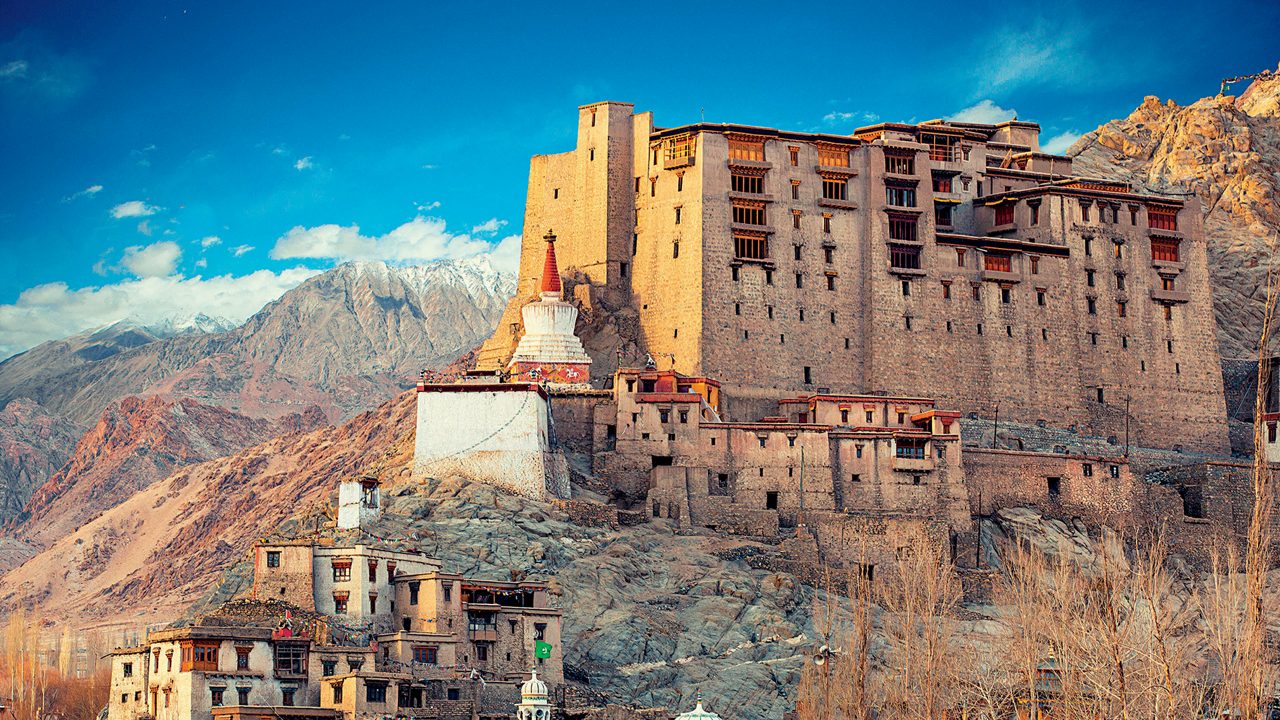
Tucked between the Himalayas and the Karakoram, Ladakh is a region of stark natural beauty and deep spiritual roots. Known for its Buddhist monasteries, traditional festivals, and unique mountain lifestyle, it offers a rare blend of tranquility and adventure. Snow-covered peaks, high-altitude deserts, and clear blue lakes make it a paradise for nature lovers and thrill-seekers alike.
Wiki Link: Ladakh
Must-Visit Attractions in Ladakh
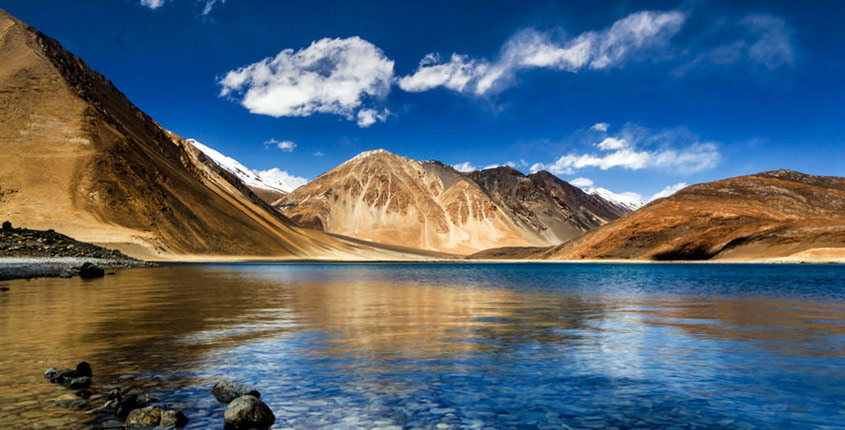
Pangong Tso Lake
Stretching across India and China, this high-altitude lake is a surreal blend of crystal-clear waters and scenic mountain backdrops.

Leh Palace
Built in the 17th century, this nine-story palace offers panoramic views of Leh and the surrounding mountains.

Magnetic Hill
A curious phenomenon near Leh where vehicles appear to roll uphill against gravity. This optical illusion has made it a popular stop for tourists.
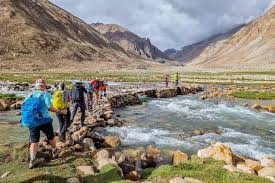
Nubra Valley
Known for its sand dunes, Bactrian camels, and picturesque villages, Nubra Valley lies beyond the Khardung La pass.

Shanti Stupa
Built by Japanese monks, this peaceful monument sits atop a hill and offers breathtaking views of the sunrise and sunset.
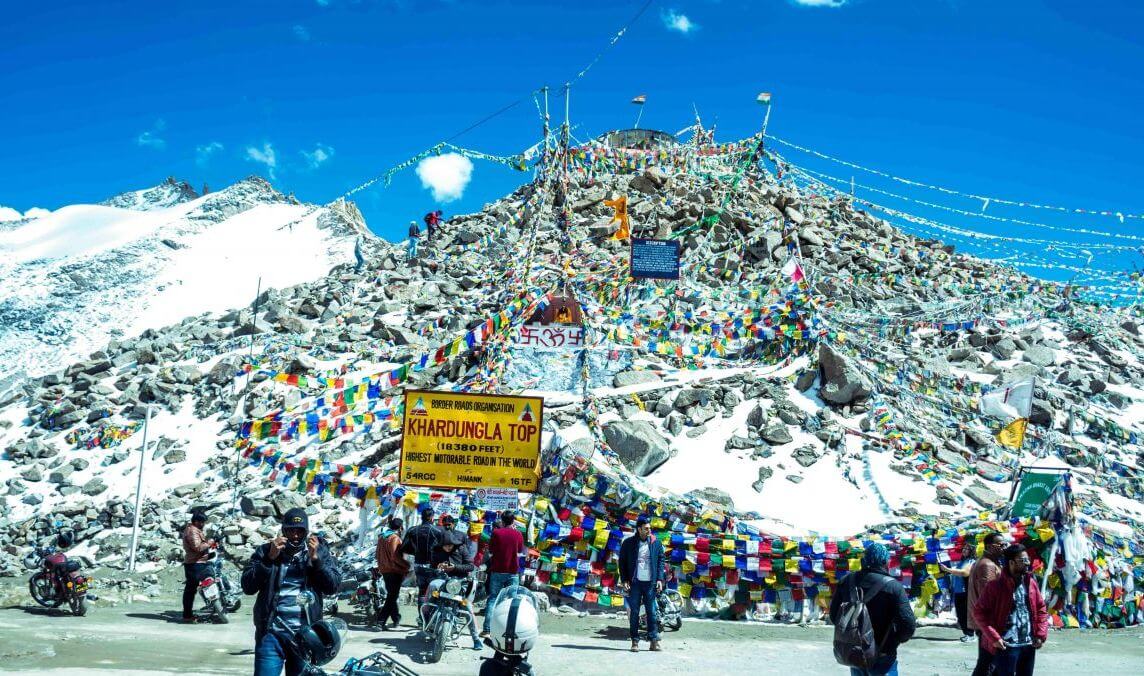
Khardung La Pass
Situated at an altitude of over 18,000 feet, this mountain pass connects Leh with Nubra Valley and offers adventurous driving.
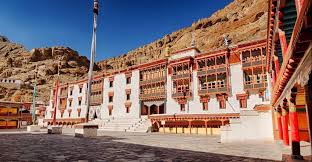
Hemis Monastery
One of the largest and wealthiest monasteries, famous for its annual festival and grand statue of Guru Padmasambhava.
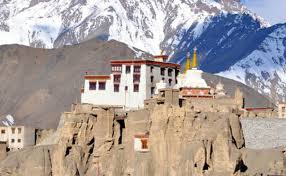
Alchi Monastery
Oldest monasteries, Alchi is known for its preserved 11th-century murals and unique Kashmiri-style architecture.
Heritage of Ladakh

Steeped in centuries of spiritual and cultural traditions, Ladakh’s heritage is deeply influenced by Tibetan Buddhism and ancient Himalayan customs. The region is home to age-old monasteries, vibrant thangka paintings, and sacred relics that speak to its religious roots. Traditional Ladakhi architecture, seen in mud-brick homes and hilltop monasteries, showcases an adaptive style shaped by the harsh climate.
The Performing Art of Ladakh
Infused with Buddhist spirituality and Himalayan traditions, Ladakh’s performing arts reflect the region’s cultural essence. Monastic dances, known as Cham, are performed during festivals in vibrant masks and robes, symbolizing good triumphing over evil. Folk songs and dances, such as Shondol and Jabro, express everyday life, love, and seasonal celebrations.
Music Form
Ladakh’s music is deeply rooted in its spiritual and communal life, often echoing themes of devotion, nature, and celebration. Traditional music is usually performed during religious ceremonies, harvests, and festive occasions. Instruments like the daman (drum) and surna (oboe) accompany soulful chants and rhythmic folk melodies that bring communities together.
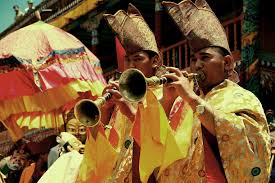
Lama Mani Songs
These are narrative songs performed by wandering monks, conveying Buddhist teachings and tales through melodic storytelling.
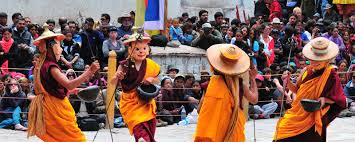
Chhoskar Songs
Sung during agricultural rituals, these songs accompany processions around fields, invoking blessings for a fruitful harvest.
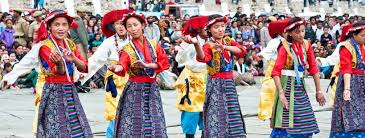
Folk Wedding Songs
Celebrated during marriage ceremonies, these songs are joyful and humorous, reflecting local customs and familial bonds.
Dance Form
Dance traditions in Ladakh are vibrant expressions of its culture, often performed during festivals, religious events, and community gatherings. These dances blend storytelling, spirituality, and celebration, with colorful costumes and rhythmic movements that reflect the region’s Buddhist and tribal influences.
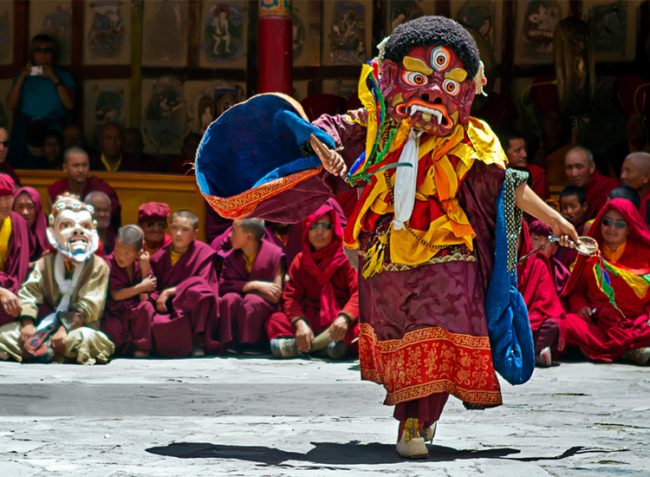
Cham Dance
Performed in monasteries during religious festivals to depict the triumph of good over evil and invoke divine blessings.

Shondol Dance
Performed exclusively for royalty, this elegant group dance showcases Ladakhi grace and is now a highlight of cultural celebrations.
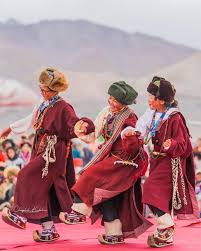
Jabro Dance
A social dance of the nomadic Changpa tribe, often performed during Losar (New Year), involving rhythmic steps and cheerful songs.
Festivals and Celebrations
Ladakh’s festivals are vibrant, deeply spiritual, and rooted in Tibetan Buddhist traditions. They often involve colorful mask dances, music, and rituals held in stunning monasteries or amidst snow-capped peaks.
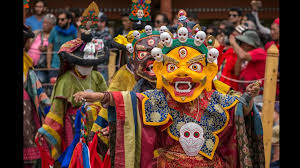
Hemis Festival

Losar
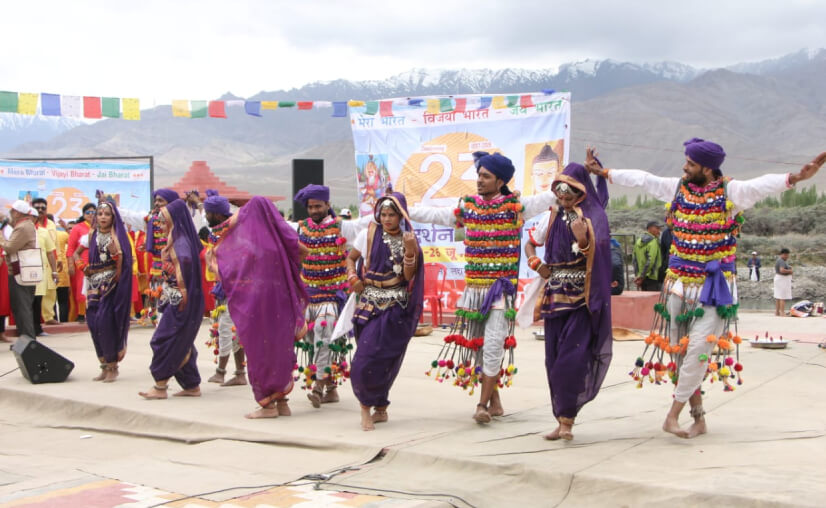
Sindhu Darshan Festival
Ladakh's Cuisine

Thukpa
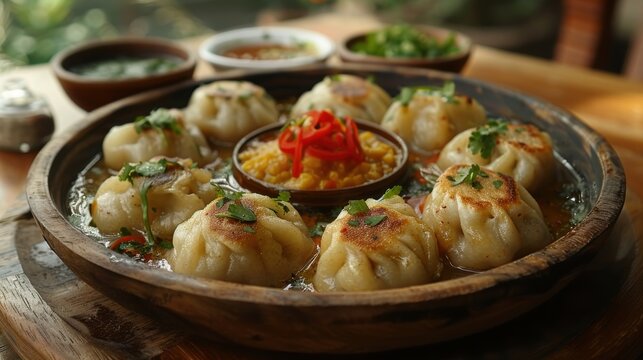
Momos

Chutagi
Ladakh’s cuisine is hearty and influenced by Tibetan flavors, perfect for its cold mountain climate.
- Thukpa – A warm noodle soup with vegetables or meat, popular during cold days.
- Momos – Steamed dumplings filled with meat or vegetables, served with spicy chutney.
- Skyu – A traditional Ladakhi stew made with handmade pasta, vegetables, and meat.
- Butter Tea – A unique salty tea made with yak butter and salt, providing energy and warmth.
- Chutagi – Local pancakes often served with butter or cheese, common in Ladakhi meals.
Popular Shopping Items
Ladakh is a shopper’s delight, offering unique handicrafts and traditional items reflecting its Himalayan culture.
- Pashmina Shawls – Luxuriously soft woolen shawls known for their warmth and fine craftsmanship.
- Thangka Paintings – Intricate Buddhist religious artworks painted on cloth.
- Handmade Jewelry – Traditional silver and turquoise jewelry crafted by local artisans.
- Wooden Carvings – Beautifully carved wooden artifacts inspired by Buddhist motifs.
- Yak Wool Products – Warm clothing and accessories made from yak wool, perfect for cold weather.
Best shopping places: Leh Market, Main Bazaar (Leh), and local handicraft shops across Ladakh.
Pashmina Shawls
Thangka Paintings
Handmade Jewelry
Wooden Carvings
Evolution of Ladakh
⇒ Early Habitation: Human settlement in Ladakh dates back to prehistoric times, with evidence of early nomadic tribes and ancient rock art.
⇒ Strategic Location: Ladakh was an important crossroads on the ancient Silk Road, facilitating trade between Central Asia, Tibet, and India.
⇒ Kingdoms: The region was ruled by the Namgyal dynasty from the 15th century, known for consolidating Ladakh’s political and cultural identity.
⇒ Buddhist Influence: The spread of Tibetan Buddhism deeply influenced Ladakh’s culture, art, and architecture, visible in its monasteries and festivals.
⇒ Modern Era: Ladakh became a separate Union Territory of India in 2019, recognized for its unique cultural heritage and strategic importance.
Folk Dance of Ladakh

Ladakh Blogs
- Foot Loose Camps
- Places to visit in Ladakh
- Places to visit nearby Ladakh
- India’s most popular destination
- India’s archaeological marvels
Recommended articles
- Ladakh Cultural guide
- Places to visit in Ladakh
- Places to visit nearby Ladakh
- India’s most popular destination
